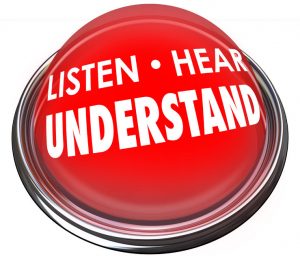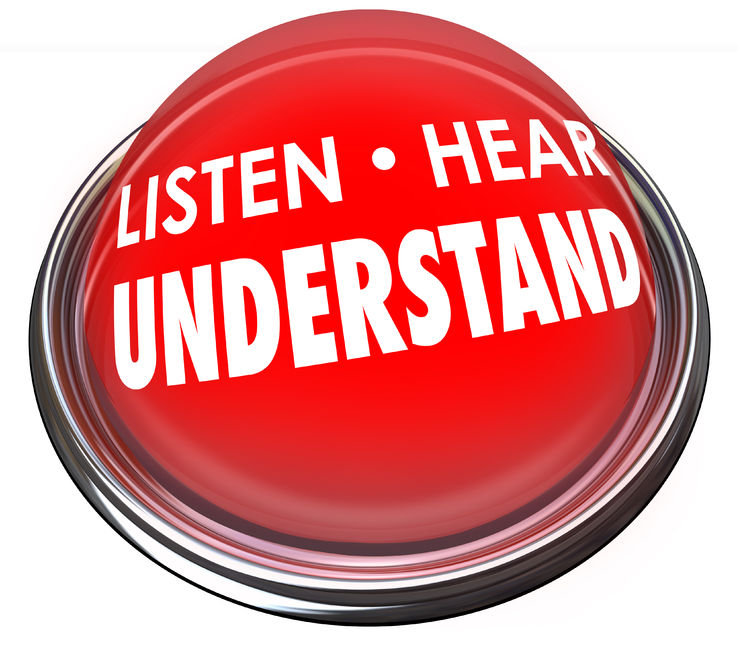
For the last four weeks, we’ve been discussing the habits of highly effective marketers based on the principles described by Stephen Covey in his book, The 7 Habits of Highly Effective People. The first four habits are:
The fifth habit is “Seek first to understand, then to be understood.” From a marketing perspective, the foundation of this habit is communication. It is the marketer’s role to create a meaningful, compelling and marketplace-centered messaging that is consistent with the company’s mission, vision and brand. Content creation and delivery of marketing messages evolve based on the knowledge of, appreciation for and empathy with the company’s target audiences and stakeholders. The process begins with listening to others.
Seek First to Understand
Most people listen with the intent to reply, not to understand. We’re all guilty of this. Most often we are too busy preparing our response for when it’s our turn to speak. Additionally, we tend to frame what others say based on our own perspective. Covey coins this as “autobiographical listening.” Listening in this way results in the intention to agree or disagree, give counsel based on our own experience or to interpret motives and behavior based on our own psyche.
According to Covey, there are five levels of listening. They are:
- Ignoring: Not listening at all
- Pretend listening: Saying “uh huh” and “right,” but not being present in the conversation
- Selective listening: Hearing part of what the person says, but generally distracted
- Attentive listening: Paying attention, but still listening from one’s own perspective
- Empathetic listening: Listening not only to the person’s words, but understanding what a person is feeling from their perspective.
Common sense tells us only the last one is truly effective. Empathetic listening demonstrates more appreciation, acceptance and compassion for others. When we listen in this way, we put ourselves in other people’s shoes and see the world through their eyes. As such, empathetic listening, while rare, is a powerful skill that requires continuous practice and attention.
The Practice of Understanding

Listening attentively is a focus-based task. Below are some tips and suggestions that marketers can use as they seek to understand as well as to be understood.
Seek to understand:
- Truly explore the nature of the problems or challenges others are they facing.
- Ask about the solution(s) they seek or are considering (What are they using now? What’s working and what isn’t?).
- Determine what considerations are important to others in making a buying decision.
- Make sure your messaging resonates, engages and addresses their interests and concerns.
- Find out how, when and where they like to receive information.
- Inquire about their time and budget considerations.
Seek to be understood:
- Build rapport so you are perceived as someone who is professional, reliable and trustworthy.
- People don’t care how much you know until they know how much you care. Make sure to demonstrate a sincere interest in others before sharing your solutions. Let them know your goal is to be of service.
- Develop meaningful content for your marketing outreach efforts that articulates your solutions to customers’ and prospects’ pain points.
- Ask for feedback and encourage questions to identify, reduce and eliminate your prospects’ and customers’ fears, uncertainties and doubts.
- Provide prospects and customers with references, guarantees and assurances to help them make a positive buying decision based not only on emotion but logic as well.
The Bottom Line

The foundation for effective communication is listening. Listening, however, is not a passive activity. It requires focus, attention, empathy and the ability to translate what is being said (or isn’t being said) into what is really important. Whether you do this in person or through written communications (emails, blogs, white papers, articles, newsletters, presentations, brochures, advertising, etc.), seek to understand and then engage with your target audiences. Anything less is a disservice to you, your company and your prospects and customers.

